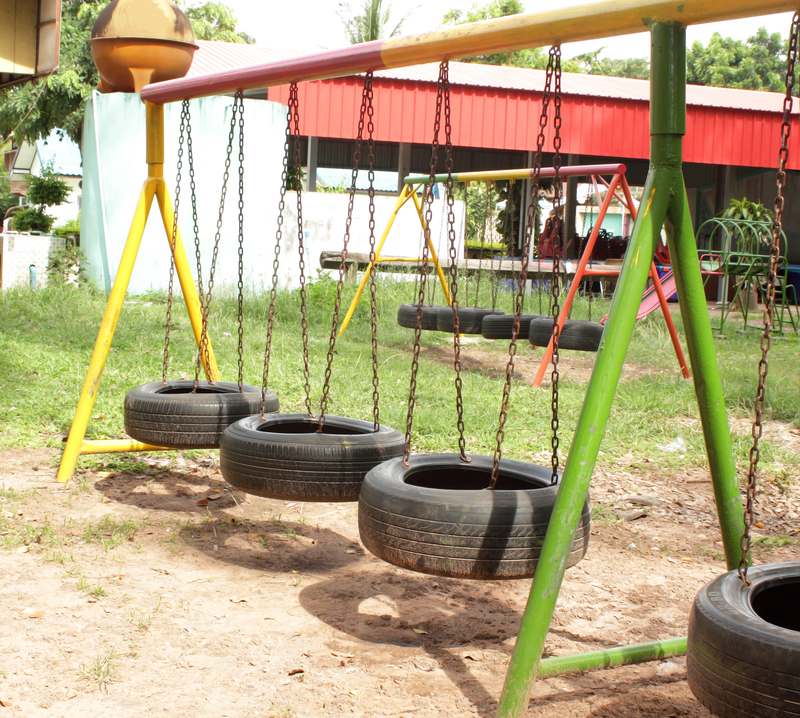Innovative Ways to Recycle Old Clothes
Are your closets overflowing with garments you no longer wear? Instead of throwing them away, why not explore innovative ways to recycle old clothes? With environmental concerns and sustainable living gaining importance, repurposing textiles has become an essential practice for eco-conscious individuals. In this comprehensive guide, we'll introduce creative, eco-friendly, and practical solutions that transform outdated apparel into valuable resources, promote sustainability, and even help you save or earn money.
Why Recycle Old Clothes?
Textile waste is a major contributor to landfills worldwide. In the era of fast fashion, millions of tons of clothing are discarded annually. Recycling old clothes reduces environmental impact, conserves resources, and supports responsible consumption. By embracing innovative recycling methods, you not only help the planet but also unleash your creativity and uncover hidden value in what you once considered trash.
The Environmental Impact of Textile Waste
- Landfill Overflow: Textiles take decades, if not centuries, to decompose, occupying significant landfill space.
- Chemical Pollution: Many clothes are treated with dyes and chemicals that leach into the soil and water.
- Resource Depletion: Garment production consumes enormous amounts of water, energy, and raw materials.
By discovering creative ways to recycle unwanted clothes, you play a vital role in reducing waste and resource consumption.

Creative Options to Recycle Old Clothes at Home
Not all discarded clothing must be sent to recycling centers. You can upcycle and repurpose fabric around the house, adding a personalized and sustainable touch to your life. Below are some innovative ways to reuse old garments within your own home.
1. DIY Fashion Projects
- Create New Apparel: Cut, sew, and combine old shirts and jeans to design patchwork skirts, tote bags, or even headbands. Use embellishments and fabric paints to update basic tees.
- Turn Jeans into Shorts: Snip the legs off your worn jeans and use the remaining fabric for fashionable shorts, with optional frayed edges or lace trim.
- Patchwork Quilts: Repurpose t-shirts, baby clothes, or dresses into memory quilts. These not only retain sentimental value but also promote sustainable living.
2. Home Decor & Utility Items
- Rag Rugs: Braid or weave strips of fabric from worn-out clothing to create colorful, durable rugs for kitchens and bathrooms.
- Pillow Covers & Cushions: Redeem shirts with interesting patterns as pillowcases or slipcovers.
- Cleaning Rags: Cut cotton t-shirts or towels into squares for reusable cleaning cloths, reducing your reliance on paper towels.
- Storage Bins: Use stiffened fabric to make organizer baskets and bins for closets or shelves.
3. Accessories and Gifts
- Fabric Jewelry: Transform colorful fabric scraps into earrings, bracelets, or brooches for unique fashion statements.
- Gift Wrap: Embrace sustainable gifting by wrapping presents in attractive pieces of upcycled cloth, following the Japanese Furoshiki tradition.
- Lavender Sachets: Sew small pouches from old clothes and fill them with dried lavender or potpourri for eco-friendly drawer fresheners.
Innovative Community & Commercial Solutions
If you lack time or resources for home projects, several innovative clothing recycling programs and business models offer alternatives to landfill disposal. Explore these effective solutions for community and commercial recycling of textiles.
1. Clothing Donation Programs
- Charitable Organizations: Donate gently used clothes to local shelters, thrift stores, or organizations such as Goodwill and The Salvation Army.
- Homeless Shelters: Many shelters accept clothing donations for immediate use by those in need.
- School Uniform Drives: Support families by donating still-wearable uniforms or children's clothes.
2. Textile Recycling Centers
- Collection Bins: Look for textile recycling bins at supermarkets, parking lots, and community centers.
- Local Council Programs: Check your area's municipal waste management for textile recycling initiatives.
- Specialty Retailer Initiatives: Major brands like H&M and Levi's run programs where you can drop off old textiles for recycling into new garments or products.
3. Clothing Swap Events
- Organize or Join a Swap: Gather with friends, neighbors, or local groups to trade unwanted clothing. It's both eco-friendly and a fun way to refresh your wardrobe.
- Online Clothes Swapping: Use platforms and apps to exchange items nationally or globally.
4. Sell or Upcycle for Profit
- Online Marketplaces: Sell quality pieces on platforms like Poshmark, eBay, Depop, or Facebook Marketplace.
- Craft & Upcycle Stores: Turn unique creations from old clothes into sellable products on Etsy or at local craft fairs.
- Consignment Shops: For designer and vintage pieces, consignment stores can find new owners for your pre-loved garments.
Artistic and Advanced Upcycling Projects
If you enjoy crafting and DIY, try some of these advanced ways to recycle old clothes creatively. Combining artistic flair with sustainability, you can upgrade discarded fabrics into extraordinary new forms.
1. Textile Art and Wall Hangings
- Fabric Collages: Use contrasting textures and colors to create striking art pieces for your walls or as gifts.
- Embroidery Canvases: Stretch fabric on a frame and embellish with original embroidery, beadwork, or painting.
- Macrame from T-shirt Yarn: Slice t-shirts into thin strips and use them for macrame plant hangers, wall art, or decor.
2. Pet Accessories
- Pet Beds: Stuff large, soft garments like sweatshirts with clean fabric scraps for cozy pet mats or beds.
- Dog Toys: Braid or knot denim and t-shirt strips to fashion chew toys for dogs.
- Collars and Bandanas: Create custom pet fashion from colorful shirt sleeves or scarf remnants.
3. Gardening Essentials
- Compostable Fabric: Natural fibers like cotton and linen can be cut into small pieces and added to compost bins.
- Plant Ties: Use soft, stretchy t-shirt strips to secure plants and vegetables in your garden.
- Row Covers: Drape worn bed sheets or large shirts over crops to shield them from pests and frost.
How Brands Are Innovating Textile Recycling
With increasing demand for sustainable fashion, many companies are developing revolutionary methods to recycle clothes on a mass scale. Learn how industry leaders are shaping the future of textile reuse.
1. Mechanical and Chemical Recycling
- Mechanical Recycling: This process shreds fabrics into fibers to be re-spun into new yarns, suitable mostly for denim, cotton, and wool garments.
- Chemical Recycling: Emerging technologies use chemical enzymes to break down synthetic fibers (like polyester) for regeneration into virgin-quality textiles.
2. Closed-Loop Production Systems
- Brand Initiatives: Companies like Patagonia, H&M, and Stella McCartney are launching closed-loop systems, taking back used clothes to produce new items, reducing raw material consumption.
- Fabric-to-Fabric Recycling: Technological advancements allow brands to reprocess pre-consumer and post-consumer waste directly into new garments, supporting a circular fashion economy.
Frequently Asked Questions about Recycling Old Clothes
- What clothes can I recycle?
- Most charity shops and textile recycling programs accept clean, dry textiles, including damaged or unsellable pieces for fiber recovery. Always check for specific requirements locally.
- Do recycled clothes have to be in good condition?
- No, even heavily worn or torn items can be recycled for insulation, rags, or raw material in manufacturing.
- How can I find textile recycling near me?
- Search your local council website, Visit Earth911, or use retailer locator tools to find the nearest collection points or programs.

Tips for a Sustainable Wardrobe Lifestyle
Implementing innovative ways to recycle old clothing begins with a shift in mindset. Here's how you can make a lasting impact:
- Buy Less, Choose Well: Invest in quality over quantity to reduce your future waste.
- Repair and Alter: Mend tears, take up hems, or re-style existing garments to extend their lifespan.
- Organize Periodic Clearouts: Regularly assess your wardrobe and separate items for upcycling or donation.
- Support Sustainable Brands: Choose companies with strong commitments to ethical production and recycling initiatives.
- Educate Friends and Family: Spread the word about creative clothing recycling to amplify your environmental impact.
Conclusion
Recycling old clothes is both an environmentally responsible and imaginative way to breathe new life into unwanted garments. Whether you choose DIY transformations, donations, community swaps, or commercial recycling programs, your efforts can minimize landfill waste and inspire others to follow suit. Start small, stay creative, and remember that every piece of fabric saved from the trash is a step toward a greener and more sustainable world.
Ready to get started?
Explore these innovative ways to recycle your old clothes and transform your wardrobe into a wellspring of sustainable, creative possibilities!